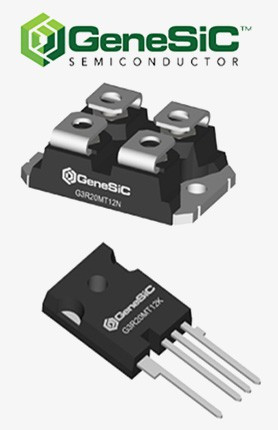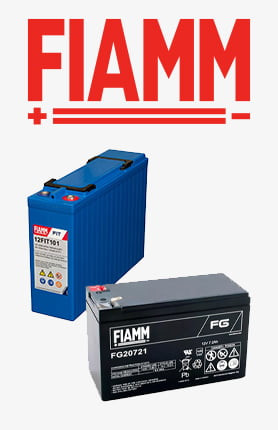-
BackX
-
Components
-
-
Category
-
Semiconductors
- Diodes
- Thyristors
-
Electro-insulated Modules
- Electro-insulated Modules | VISHAY (IR)
- Electro-insulated Modules | INFINEON (EUPEC)
- Electro-insulated Modules | Semikron
- Electro-insulated Modules | POWEREX
- Electro-insulated Modules | IXYS
- Electro-insulated Modules | POSEICO
- Electro-insulated Modules | ABB
- Electro-insulated Modules | TECHSEM
- Go to the subcategory
- Bridge Rectifiers
-
Transistors
- Transistors | GeneSiC
- SiC MOSFET Modules | Mitsubishi
- SiC MOSFET Modules | STARPOWER
- Module SiC MOSFET ABB’s
- IGBT Modules | MITSUBISHI
- Transistor Modules | MITSUBISHI
- MOSFET Modules | MITSUBISHI
- Transistor Modules | ABB
- IGBT Modules | POWEREX
- IGBT Modules | INFINEON (EUPEC)
- Silicon Carbide (SiC) semiconductor elements
- Go to the subcategory
- Gate Drivers
- Power Blocks
- Go to the subcategory
- Electrical Transducers
-
Passive components (capacitors, resistors, fuses, filters)
- Resistors
-
Fuses
- Miniature Fuses for electronic circuits - ABC & AGC Series
- Tubular Fast-acting Fuses
- Time-delay Fuse Links with GL/GG & AM characteristics
- Ultrafast Fuse Links
- Fast-acting Fuses (British & American standard)
- Fast-acting Fuses (European standard)
- Traction Fuses
- High-voltage Fuse Links
- Go to the subcategory
- Capacitors
- EMI Filters
- Supercapacitors
- Power surge protection
- Go to the subcategory
-
Relays and Contactors
- Relays and Contactors - Theory
- 3-Phase AC Semiconductor Relays
- DC Semiconductor Relays
- Controllers, Control Systems and Accessories
- Soft Starters and Reversible Relays
- Electromechanical Relays
- Contactors
- Rotary Switches
-
Single-Phase AC Semiconductor Relays
- AC ONE PHASE RELAYS 1 series| D2425 | D2450
- One phase semiconductor AC relays CWA and CWD series
- One phase semiconductor AC relays CMRA and CMRD series
- One phase semiconductor AC relays - PS series
- Double and quadruple semiconductor AC relays - D24 D, TD24 Q, H12D48 D series
- One phase semiconductor relays - gn series
- Ckr series single phase solid state relays
- One phase AC semiconductor relays for DIN bus - ERDA I ERAA series
- 150A AC single phase relays
- Rail Mountable Solid State Relays With Integrated Heat Sink - ENDA, ERDA1 / ERAA1 series
- Go to the subcategory
- Single-Phase AC Semiconductor Relays for PCBs
- Interface Relays
- Go to the subcategory
- Cores and Other Inductive Components
- Heatsinks, Varistors, Thermal Protection
- Fans
- Air Conditioning, Accessories for Electrical Cabinets, Coolers
-
Batteries, Chargers, Buffer Power Supplies and Inverters
- Batteries, Chargers - Theoretical Description
- Modular Li-ion Battery Building Blocks, Custom Batteries, BMS
- Batteries
- Battery Chargers and Accessories
- Uninterruptible Power Supply and Buffer Power Supplies
- Inverters and Photovoltaic Equipments
- Energy storage
- Fuel cells
- Lithium-ion batteries
- Go to the subcategory
-
Automatics
- Futaba Drone Parts
- Limit Switches, Microswitches
- Sensors, Transducers
-
Infrared Thermometers (Pyrometers)
- IR-TE Series - Water-proof Palm-sized Radiation Thermometer
- IR-TA Series - Handheld Type Radiation Thermometer
- IR-H Series - Handheld Type Radiation Thermometer
- IR-BA Series - High-speed Compact Radiation Thermometer
- IR-FA Series - Fiber Optic Radiation Thermometer
- IR-BZ Series - Compact Infrared Thermometers
- Go to the subcategory
- Counters, Time Relays, Panel Meters
- Industrial Protection Devices
- Light and Sound Signalling
- Thermographic Camera
- LED Displays
- Control Equipments
-
Recorders
- Hybrid Recorders - AL3000 Series | CHINO
- Graphic Recorder - KR2000 Series | CHINO
- Ubiquitous Recorders - KR5000 Series | CHINO
- Palm-sized Temperature/Humidity Meters - HN-CH Series | CHINO
- Consumables for Recorders
- 71VR1 - Compact Paperless Recorder | M-SYSTEM
- Graphic Recorder - KR3000 Series | CHINO
- PC Recorders - R1M Series | M-SYSTEM
- PC Recorders - R2M Series | M-SYSTEM
- PC Recorders - RZMS Series | M-SYSTEM
- PC Recorders - RZUS Series | M-SYSTEM
- Go to the subcategory
- Go to the subcategory
-
Cables, Litz wires, Conduits, Flexible connections
- Wires
- Litz wires
- Cables for extreme applications
- Sleevings
-
Braids
- Flat Braids
- Round Braids
- Very Flexible Flat Braids
- Very Flexible Round Braids
- Cylindrical Cooper Braids
- Cylindrical Cooper Braids and Sleevings
- Flexible Earthing Connections
- Galvanized and Stainless Steel Cylindrical Braids
- PCV Insulated Copper Braids (temp. up to 85C)
- Flat Aluminium Braids
- Junction Set - Braids and Tubes
- Go to the subcategory
- Traction Equipment
- Cable Terminals
- Flexible Insulated Busbars
- Flexible Multilayer Busbars
- Cable Duct Systems
- Hoses
- Go to the subcategory
- View all categories
-
Semiconductors
-
-
- Suppliers
-
Applications
- CNC Machine Tools
- DC and AC Drives (Inverters)
- Energetics
- Energy bank
- Equipment and Components for Hazardous Areas [Ex]
- Equipment for Distribution, Control and Telecommunications Cabinets
- HVAC Automation
- Induction Heating
- Industrial Automation
- Industrial Protective Devices
- Machines for Drying and Wood Processing
- Machines for Thermoforming Plastics
- Mining, Metallurgy and Foundry
- Motors and Transformers
- Power Supplies (UPS) and Rectifier Systems
- Printing
- Temperature Measurement and Regulation
- Test and Laboratory Measurements
- Tram and Railway Traction
- Welding Machines
-
Assembly
-
-
Inductors
-
-
Induction devices
-
-
https://www.dacpol.eu/pl/naprawy-i-modernizacje
-
-
Service
-
- Contact
- Zobacz wszystkie kategorie
What is a network switch and what are its uses?

What is a network switch?
A network switch is a fundamental element of network infrastructure that enables efficient communication between various devices in a network. It can be compared to an intelligent mailbox that directs data packets to the appropriate recipients within the network.
How does a network switch work?
The operation of a network switch is based on analyzing the MAC (Media Access Control) addresses contained in data frames. Upon receiving a frame, the switch checks its MAC address and forwards it only to the appropriate ports where the recipients are located. This reduces network traffic, which contributes to increased network performance and security.
Types of network switches
Layer 2 switches (Data Link Layer)
Layer 2 switches operate at the data link layer and work based on MAC addresses. They can filter, forward, or drop data frames.
Layer 3 switches (Network Layer)
Layer 3 switches operate at the network layer (IP) and can make routing decisions based on IP addresses. They are more advanced and flexible than layer 2 switches.
Managed and unmanaged switches
Managed switches allow network administrators to configure and monitor the device's operation, whereas unmanaged switches operate automatically without external intervention.
Applications of network switches
In home networks
In home networks, switches are used to connect various devices such as computers, printers, smartphones, and televisions, enabling resource sharing and Internet access.
In enterprise networks
In enterprise networks, switches are key elements of the infrastructure, enabling fast and secure communication between employees and ensuring stable connections to network resources.
In data centers
In data centers, switches are used to create advanced network structures that enable efficient and secure transmission of large amounts of data.
In telecommunication infrastructure
Switches are also used in telecommunication infrastructure, such as in monitoring or control systems, where they ensure fast and reliable data transmission.
Advantages of network switches
Fast data transmission: Network switches enable fast data transmission by forwarding frames only to the appropriate ports, eliminating congestion and ensuring efficient communication within the network.
Network segmentation capability: By allowing the network to be segmented into logical groups, switches provide better control of network traffic and enhance security through segment isolation.
Efficient packet forwarding: Network switches use smart techniques for filtering and forwarding packets, which translates into efficient data transmission without the need to send data to all ports in the network.
Disadvantages of network switches
Costs: Network switches can be expensive, especially those with advanced management features, which can be challenging for smaller businesses or home budgets.
Maintenance requirements: Depending on the model and the size of the network, switches may require regular maintenance, software updates, and performance monitoring, which can be time-consuming and require IT staff involvement.
Network security
Network security is a critical issue for any organization, which is why network switches are equipped with various security features to help secure the network against unauthorized access and attacks. Below are the key security features available in network switches:
Access Control
The access control feature allows network administrators to specify which devices or users have the right to access the network and what network resources they can use. Network switches can be configured to authenticate users based on various criteria such as MAC addresses, IP addresses, or authentication credentials.
Access Control Lists (ACL)
Access Control Lists allow precise definition of network access rules at the level of ports, IP addresses, MAC addresses, or network protocols. Using ACLs, access to specific network resources can be restricted or dangerous network traffic can be blocked, helping to ensure network security against external attacks.
VLANs (Virtual Local Area Networks)
VLANs allow the physical network to be divided into logical segments, enabling traffic separation and increased security by isolating different groups of devices. Network switches can be configured to create multiple VLANs, each with its own security rules and access levels.
Preventing ARP Spoofing and MAC Spoofing attacks
Network switches can be configured to detect and block ARP Spoofing (falsification of MAC addresses in ARP frames) and MAC Spoofing (falsification of MAC addresses), which potential intruders can use to impersonate other devices on the network and take control of them.
Advantages of network switches
Fast data transmission: Network switches enable fast data transmission by forwarding frames only to the appropriate ports, eliminating congestion and ensuring efficient communication within the network.
Advantages of network switches
Fast data transmission: Network switches enable fast data transmission by forwarding frames only to the appropriate ports, eliminating congestion and ensuring efficient communication within the network.
Summary
The heatsink plays a key role in dissipating excess heat from electronic systems, ensuring the proper operating temperature of components. Knowledge of different types of heatsinks and their proper application is crucial for efficient cooling of electronic systems.
Heatsinks help maintain a stable operating temperature for electronic systems, which translates to their performance, reliability, and longevity. Different types of heatsinks, such as passive, active, water, oil, and fan heatsinks, allow cooling to be tailored to specific needs and working conditions.
It is therefore important to be aware of the significance of heatsinks and to be able to properly select them for specific applications to ensure optimal operating conditions for electronic systems.
Read also:
What is an HVAC system?
What is an electrolytic capacitor? Structure, advantages, and types
High-density, high-efficiency IGBT power modules series X 4500V
Related posts
 Now available – DC/DC converters from PREMIUM
Now available – DC/DC converters from PREMIUM
 New release in DACPOL lighting for lathes – Kira covers
New release in DACPOL lighting for lathes – Kira covers




Leave a comment